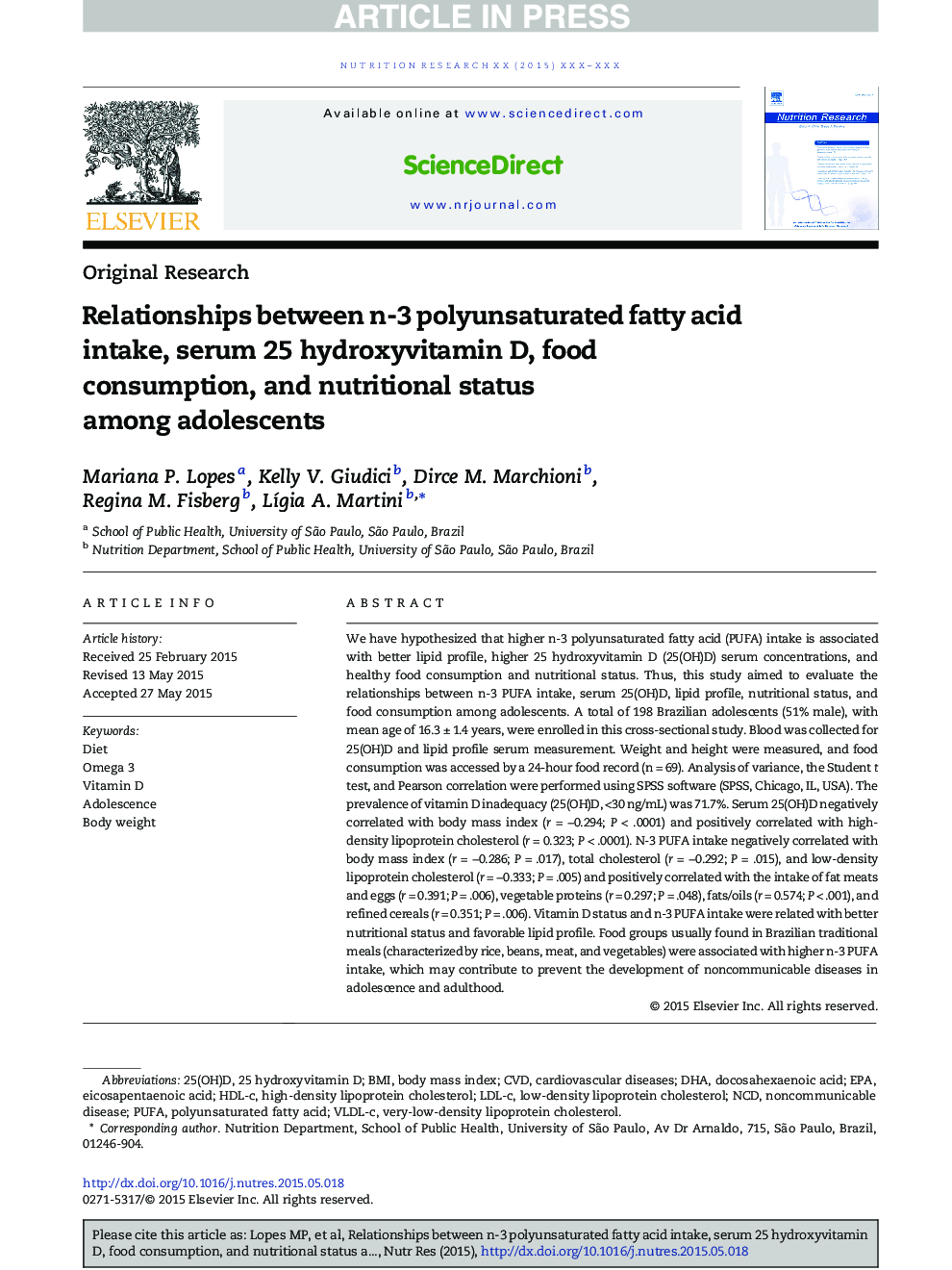| Article ID | Journal | Published Year | Pages | File Type |
|---|---|---|---|---|
| 5904344 | Nutrition Research | 2015 | 8 Pages |
Abstract
We have hypothesized that higher n-3 polyunsaturated fatty acid (PUFA) intake is associated with better lipid profile, higher 25 hydroxyvitamin D (25(OH)D) serum concentrations, and healthy food consumption and nutritional status. Thus, this study aimed to evaluate the relationships between n-3 PUFA intake, serum 25(OH)D, lipid profile, nutritional status, and food consumption among adolescents. A total of 198 Brazilian adolescents (51% male), with mean age of 16.3 ± 1.4 years, were enrolled in this cross-sectional study. Blood was collected for 25(OH)D and lipid profile serum measurement. Weight and height were measured, and food consumption was accessed by a 24-hour food record (n = 69). Analysis of variance, the Student t test, and Pearson correlation were performed using SPSS software (SPSS, Chicago, IL, USA). The prevalence of vitamin D inadequacy (25(OH)D, <30 ng/mL) was 71.7%. Serum 25(OH)D negatively correlated with body mass index (r = â0.294; P < .0001) and positively correlated with high-density lipoprotein cholesterol (r = 0.323; P < .0001). N-3 PUFA intake negatively correlated with body mass index (r = â0.286; P = .017), total cholesterol (r = â0.292; P = .015), and low-density lipoprotein cholesterol (r = â0.333; P = .005) and positively correlated with the intake of fat meats and eggs (r = 0.391; P = .006), vegetable proteins (r = 0.297; P = .048), fats/oils (r = 0.574; P < .001), and refined cereals (r = 0.351; P = .006). Vitamin D status and n-3 PUFA intake were related with better nutritional status and favorable lipid profile. Food groups usually found in Brazilian traditional meals (characterized by rice, beans, meat, and vegetables) were associated with higher n-3 PUFA intake, which may contribute to prevent the development of noncommunicable diseases in adolescence and adulthood.
Keywords
VLDL-CEPANCDHDL-CLDL-C25(OH)D25 hydroxyvitamin DEicosapentaenoic aciddocosahexaenoic acidPolyunsaturated fatty acidPUFAOmega 3AdolescenceNoncommunicable diseaseCardiovascular diseasesDHACVDDietbody mass indexBMIhigh-density lipoprotein cholesterolbody weightVitamin DLow-density lipoprotein cholesterolVery-low-density lipoprotein cholesterol
Related Topics
Life Sciences
Biochemistry, Genetics and Molecular Biology
Endocrinology
Authors
Mariana P. Lopes, Kelly V. Giudici, Dirce M. Marchioni, Regina M. Fisberg, LÃgia A. Martini,
